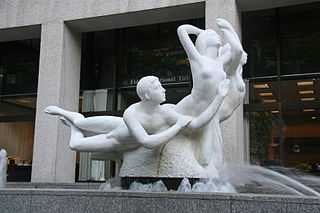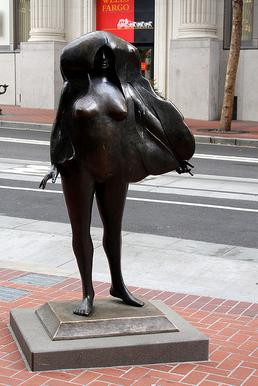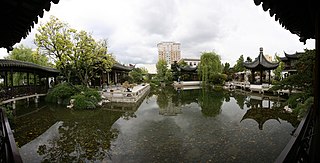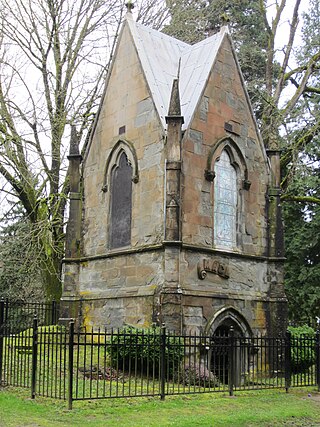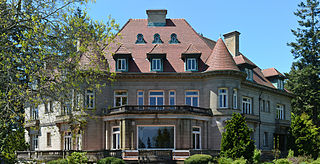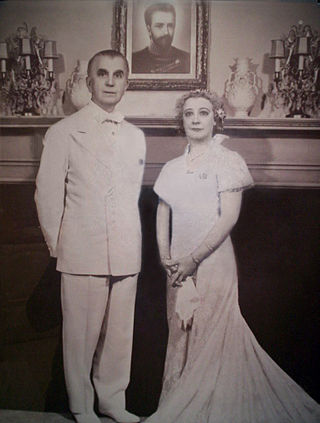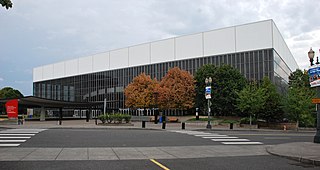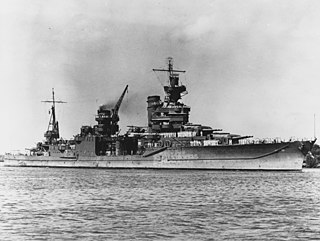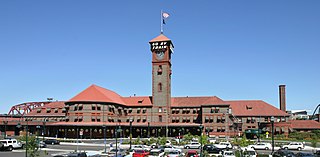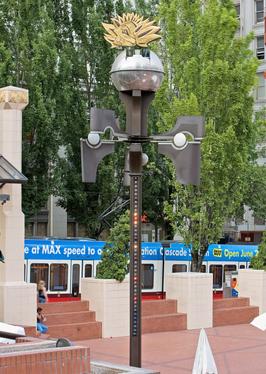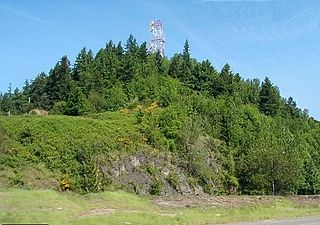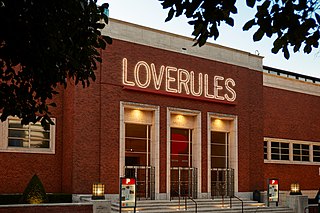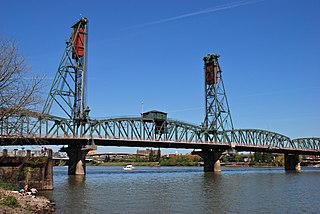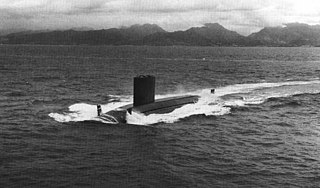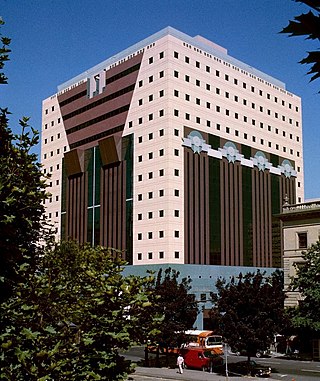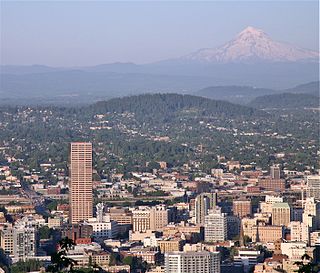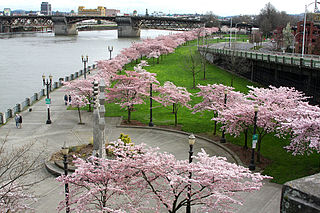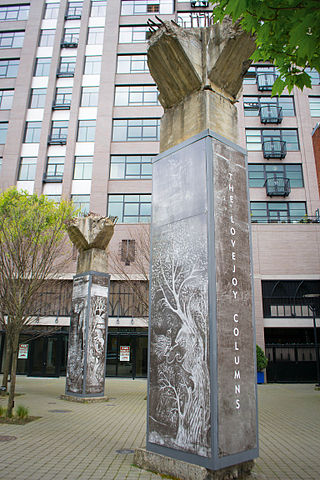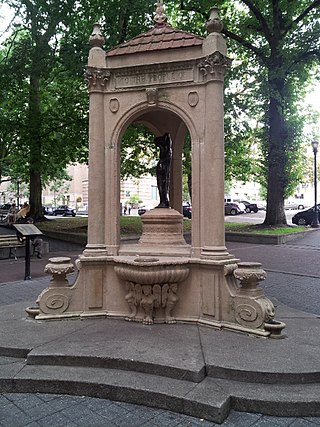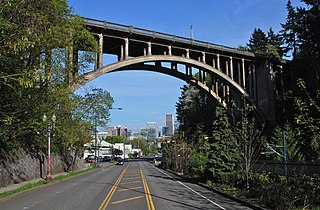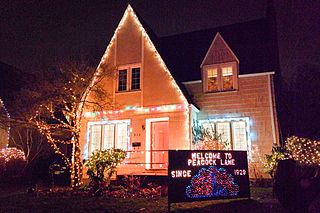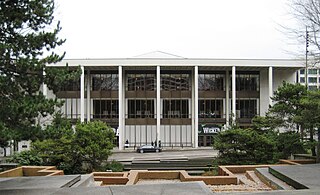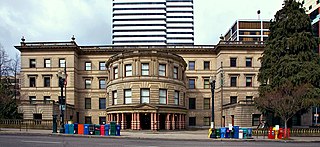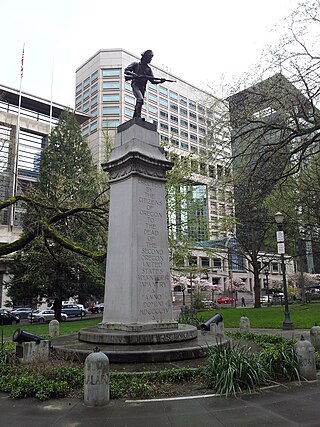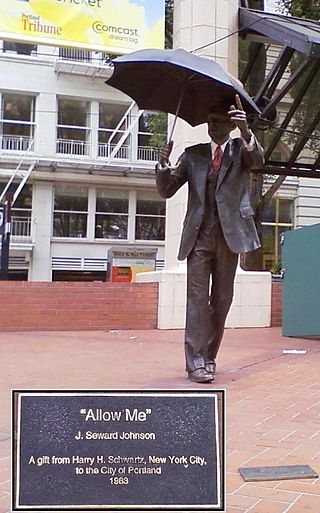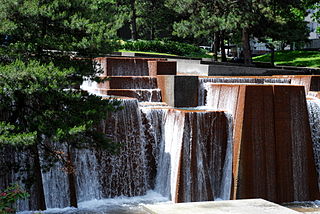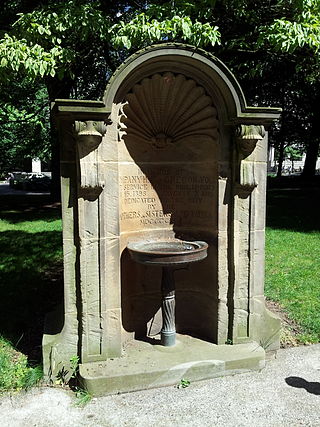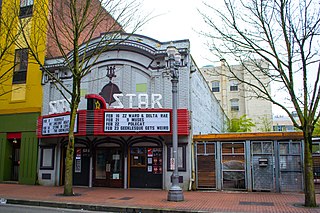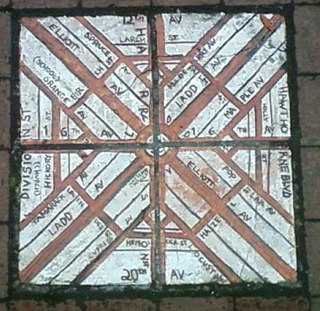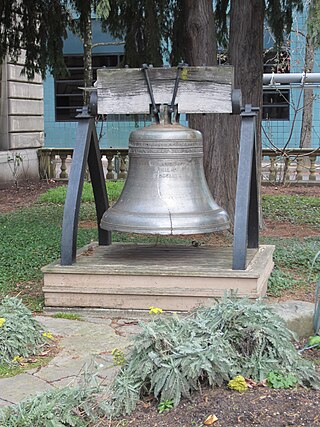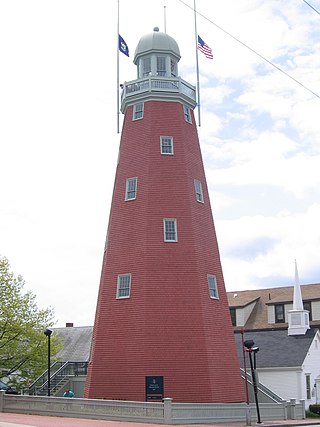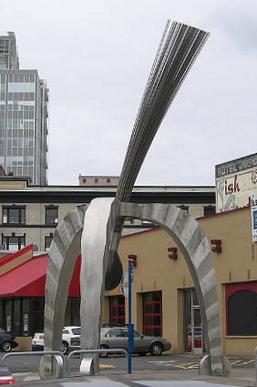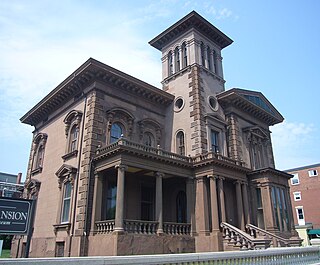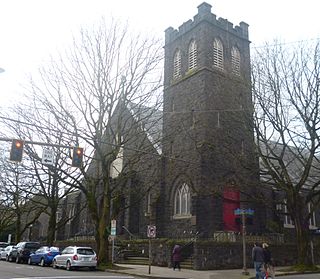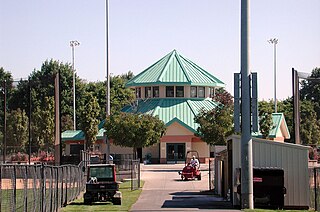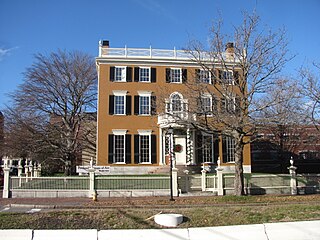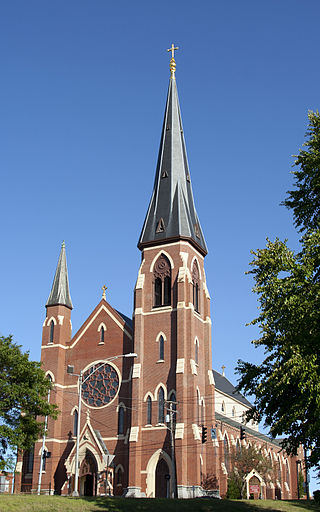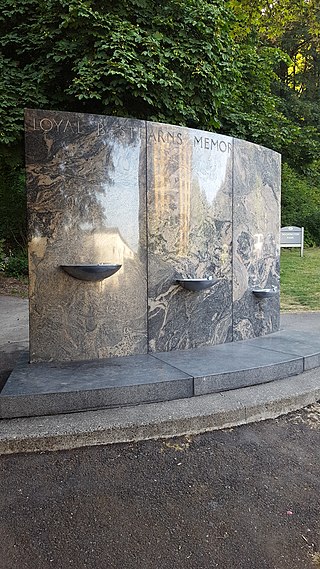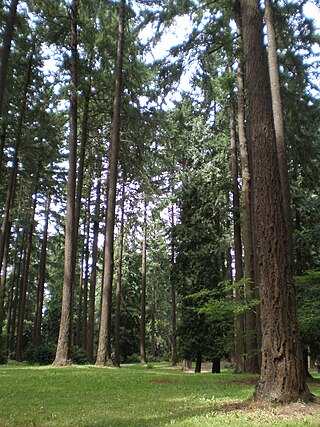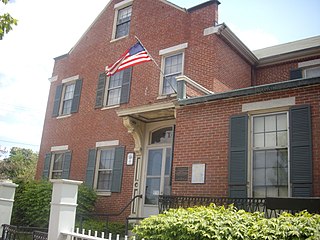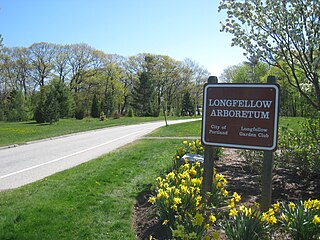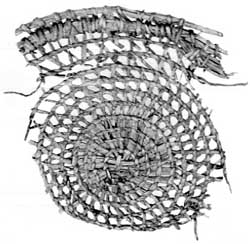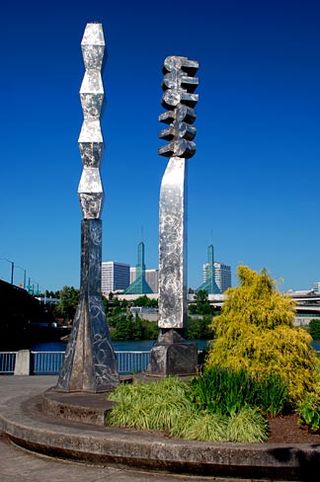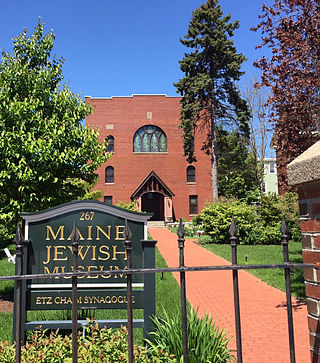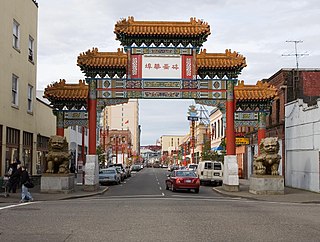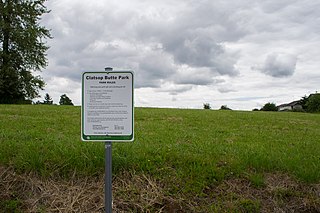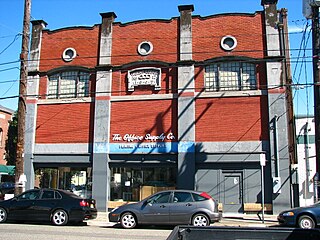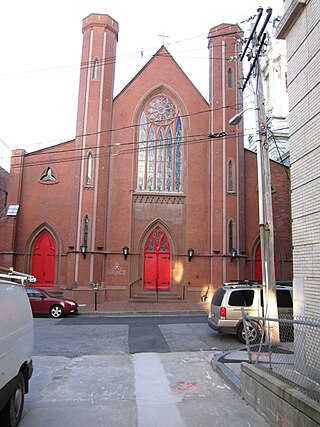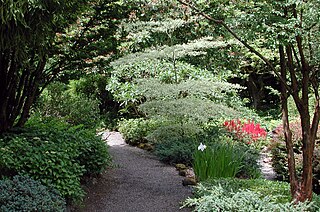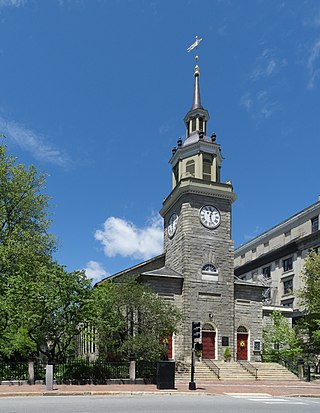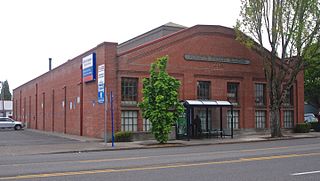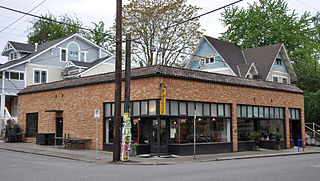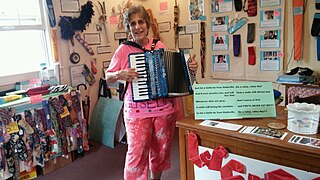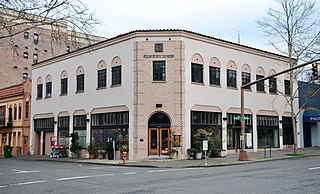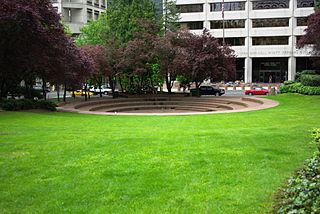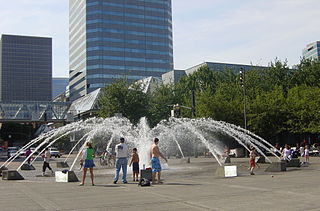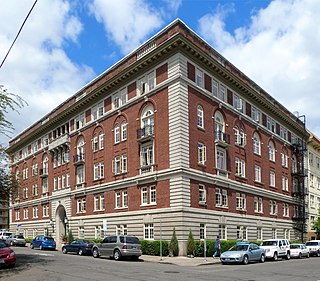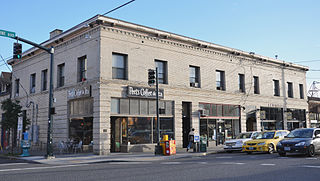100 Sights in Portland, United States (with Map and Images)
Legend
Welcome to your journey through the most beautiful sights in Portland, United States! Whether you want to discover the city's historical treasures or experience its modern highlights, you'll find everything your heart desires here. Be inspired by our selection and plan your unforgettable adventure in Portland. Dive into the diversity of this fascinating city and discover everything it has to offer.
Sightseeing Tours in PortlandActivities in PortlandPowell Butte is an extinct cinder cone butte in Portland, Oregon, United States. It is part of the Boring Lava Field, which includes more than 80 small volcanic edifices and lava flows in the Portland–Vancouver metropolitan area. The region around Powell Butte has a cool climate, and the butte and its surroundings feature meadows, rivers, and mixed forests. Powell Butte hosts the Powell Butte Nature Park, which includes about 612 acres (2.48 km2) of trails for biking, hiking, and horseback riding.
The Quest, sometimes referred to as Saturday Night at the Y or Three Groins in a Fountain, is an outdoor marble sculpture and fountain designed by Count Alexander von Svoboda, located in Portland, Oregon in the United States. The sculpture, carved in Italy from a single 200-ton block of white Pentelic marble quarried in Greece, was commissioned by Georgia-Pacific in 1967 and installed in front of the Standard Insurance Center in 1970. It depicts five nude figures, including three females, one male and one child. According to the artist, the subjects represent man's eternal search for brotherhood and enlightenment.
Kvinneakt is an abstract bronze sculpture located on the Transit Mall of downtown Portland, Oregon. Designed and created by Norman J. Taylor between 1973 and 1975, the work was funded by TriMet and the United States Department of Transportation and was installed on the Transit Mall in 1977. The following year Kvinneakt appeared in the "Expose Yourself to Art" poster which featured future Mayor of Portland Bud Clark flashing the sculpture. It remained in place until November 2006 when it was removed temporarily during renovation of the Transit Mall and the installation of the MAX Light Rail on the mall.
Lan Su Chinese Garden, formerly the Portland Classical Chinese Garden and titled the Garden of Awakening Orchids, is a walled Chinese garden enclosing a full city block, roughly 40,000 square feet (4,000 m2) in the Chinatown area of the Old Town Chinatown neighborhood of Portland, Oregon, United States. The garden is influenced by many of the famous classical gardens in Suzhou.
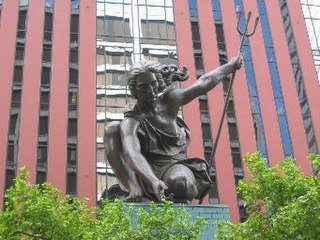
Portlandia is a sculpture by Raymond Kaskey located above the entrance of the Portland Building in downtown Portland, Oregon. It is the second largest copper repoussé statue in the United States, after the Statue of Liberty.
Lone Fir Cemetery, in the southeast section of Portland, Oregon, United States, is a cemetery owned and maintained by Metro, a regional government entity. Listed on the National Register of Historic Places, the first burial was in 1846 with the cemetery established in 1855. Lone Fir has over 25,000 burials spread over more than 30 acres (120,000 m2).
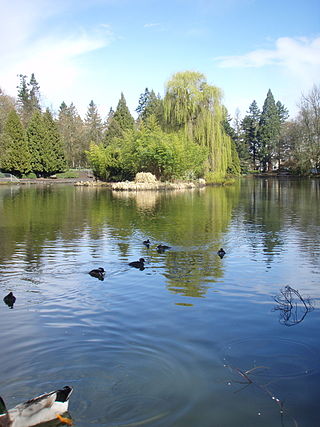
Laurelhurst Park is a city park in the neighborhood of Laurelhurst in Portland, Oregon. The 26.81-acre (10.85 ha) park was acquired in 1909 from the estate of former Portland mayor William S. Ladd. The City of Portland purchased the land in 1911, and the following year park superintendent Emanuel Mische designed the park in accordance with the Olmsted Plan.
The Pittock Mansion is a French Renaissance-style château in the West Hills of Portland, Oregon, United States. It was built in 1914 as a private home for London-born Oregonian publisher Henry Pittock and his wife, Georgiana Burton Pittock. It is a 46-room estate built of Tenino sandstone situated on 46 acres (19 ha) that is now owned by the city's Bureau of Parks and Recreation and open for touring.
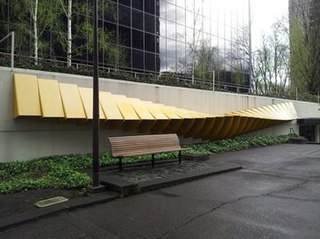
Awning is an outdoor 1976 painted aluminum sculpture by Canadian artist Douglas Senft, located near Southwest 3rd Avenue and Southwest Market Street in downtown Portland, Oregon. The 60-foot (18 m) sculpture was selected and funded by the Portland Development Commission from more than 200 proposals in a request for art intended to "humanize the modern architecture" of the Portland Center. Senft was 26 years old when Awning was installed. It is part of the collection of the Regional Arts & Culture Council. The yellow-colored work is mounted to the side of 200 Market along a pedestrian trail that serves as an extension of Third Avenue.
10. Self Realization Fellowship
Self-Realization Fellowship (SRF) is a worldwide religious organization founded in 1920 by Paramahansa Yogananda, the Indian guru who authored Autobiography of a Yogi. Before moving to the United States, Yogananda began his spiritual work in India in 1917 and named it Yogoda Satsanga Society of India (YSS). He moved to the West in 1920 and in 1925 established SRF's headquarters at Mount Washington, Los Angeles, California. Before his return visit to India in 1935, he legally incorporated SRF in the United States, designating it as the only organization to carry on his work – to care for and disseminate his teachings.
11. Oregon Zoo
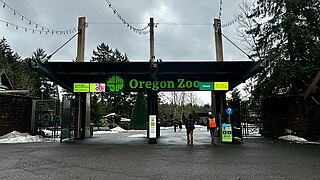
The Oregon Zoo, originally the Portland Zoo and later the Washington Park Zoo, is a zoo located in Washington Park, Portland, Oregon, approximately 2 miles (3.2 km) southwest of downtown Portland. Founded in 1888, it is the oldest zoo west of the Mississippi River.
12. I AM Sanctuary
The I AM Movement, also referred to as the I AM Temple, is the original ascended master teachings neo-Theosophical religious movement founded in the early 1930s by Guy Ballard (1878–1939) and his wife Edna Anne Wheeler Ballard (1886–1971) in Chicago, Illinois. It is an offshoot of theosophy and a major precursor of several New Age religions including the Church Universal and Triumphant.
13. Veterans Memorial Coliseum
The Veterans Memorial Coliseum is an indoor arena located in the oldest part of the Rose Quarter area in Portland, Oregon. The arena is the home of the Portland Winterhawks, a major junior ice hockey team, and was the original home of the Portland Trail Blazers of the National Basketball Association. It has been included on the National Register of Historic Places in recognition of its architectural significance.
Wikipedia: Veterans Memorial Coliseum (Portland, Oregon) (EN)
14. Mast of the USS Portland
USS Portland (CL/CA–33) was the lead ship of the Portland class of cruiser and the first ship of the United States Navy named after the city of Portland, Maine. Launched in 1932, she completed a number of training and goodwill cruises in the interwar period before seeing extensive service during World War II, beginning with the Battle of the Coral Sea in 1942, where she escorted the aircraft carrier Yorktown and picked up survivors from the sunken carrier Lexington. She screened for Yorktown again in the Battle of Midway, picking up her survivors as well. She then supported the carrier Enterprise during the initial phase of the Guadalcanal Campaign later that year, and was torpedoed during the Naval Battle of Guadalcanal. The torpedo inflicted heavy damage which put her out of action for six months as she was repaired in Sydney, Australia, and later San Diego, California.
15. Oaks Amusement Park
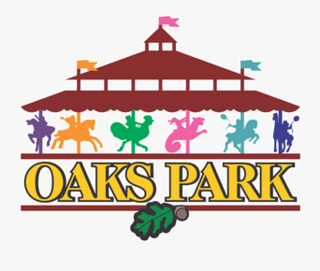
Oaks Park is a small amusement park located 3.5 miles (5.6 km) south of downtown Portland, Oregon, United States. Opened in May 1905, it is one of the oldest continually operating amusement parks in the country.
16. Portland Union Station
Portland Union Station is a train station in Portland, Oregon, United States, situated near the western shore of the Willamette River in Old Town Chinatown. It serves as an intermediate stop for Amtrak's Cascades and Coast Starlight routes and, along with King Street Station in Seattle, is one of two western termini of the Empire Builder. The station is a major transport hub for the Portland metropolitan area with connections to MAX Light Rail, the Portland Streetcar, and local and intercity bus services. The station building contains Wilf's Restaurant & Bar on the ground level and offices on the upper floors. It also has Amtrak's first Metropolitan Lounge on the West Coast, which is reserved for first-class sleeping car and business-class passengers.
17. Mill Ends Park
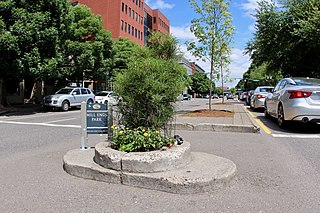
Mill Ends Park is an extremely small urban park, consisting of one tree, located in the median strip of SW Naito Parkway next to Tom McCall Waterfront Park along the Willamette River near SW Taylor Street in the downtown core of Portland, Oregon, United States. The park is a small circle 2 ft (0.61 m) across, with a total area of 452 sq in (0.292 m2). It is the smallest park in the world, according to the Guinness Book of Records, which first granted it this recognition in 1971, though this title may be soon given to a 2022 park in Talent, Oregon, which is 78 sq in (500 cm2) smaller.
18. Weather Machine
Weather Machine is a lumino kinetic bronze sculpture and columnar machine that serves as a weather beacon, displaying a weather prediction each day at noon. Designed and constructed by Omen Design Group Inc., the approximately 30-foot-tall (9 m) sculpture was installed in 1988 in a corner of Pioneer Courthouse Square in Portland, Oregon, United States. Two thousand people attended its dedication, which was broadcast live nationally from the square by Today weatherman Willard Scott. The machine costs $60,000.
19. Rocky Butte
Rocky Butte is an extinct cinder cone butte in Portland, Oregon, United States. It is also part of the Boring Lava Field, a group of volcanic vents and lava flows throughout Oregon and Washington state. The volcano erupted between 285,000 and 500,000 years ago.
20. Portland Art Museum
The Portland Art Museum (PAM) is an art museum in downtown Portland, Oregon, United States. The Portland Art Museum has 240,000 square feet, with more than 112,000 square feet of gallery space. The museum’s permanent collection has over 42,000 works of art. PAM features a center for Native American art, a center for Northwest art, a center for modern and contemporary art, permanent exhibitions of Asian art, and an outdoor public sculpture garden. The Northwest Film Center is also a component of Portland Art Museum.
21. Hawthorne Bridge
The Hawthorne Bridge is a truss bridge with a vertical lift that spans the Willamette River in Portland, Oregon, joining Hawthorne Boulevard and Madison Street. It is the oldest vertical-lift bridge in operation in the United States and the oldest highway bridge in Portland. It is also the busiest bicycle bridge in Oregon, with over 8,000 cyclists and 800 TriMet buses daily. It was added to the National Register of Historic Places in November 2012.
22. USS Blueback
USS Blueback (SS-581) is a Barbel-class submarine that served in the United States Navy from 1959 to 1990, and subsequently was made into an exhibit at the Oregon Museum of Science and Industry. She was the second Navy submarine to bear the name.
23. The Portland Building
The Portland Building, alternatively referenced as the Portland Municipal Services Building, is a 15-story municipal office building located at 1120 SW 5th Avenue in downtown Portland, Oregon. Built at a cost of US$29 million, it opened in 1982 and was considered architecturally groundbreaking at the time.
24. Broadway Bridge
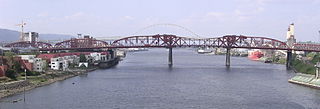
The Broadway Bridge is a Rall-type bascule bridge spanning the Willamette River in Portland, Oregon, United States, built in 1913. It was Portland's first bascule bridge, and it continues to hold the distinction of being the longest span of its bascule design type in the world. It was added to the National Register of Historic Places in November 2012.
25. Mount Tabor
Mount Tabor is an extinct volcanic vent with a city park on the volcano, located in Portland, Oregon's neighborhood of the same name. The name refers to Mount Tabor, Israel. It was named by Plympton Kelly, son of Oregon City pioneer resident Clinton Kelly.
26. Governor Tom McCall Waterfront Park
Governor Tom McCall Waterfront Park is a 36.59-acre (148,100 m2) park located in downtown Portland, Oregon, along the Willamette River. After the 1974 removal of Harbor Drive, a major milestone in the freeway removal movement, the park was opened to the public in 1978. The park covers 13 tax lots and is owned by the City of Portland. The park was renamed in 1984 to honor Tom McCall, the Oregon governor who pledged his support for the beautification of the west bank of the Willamette River—harkening back to the City Beautiful plans at the turn of the century which envisioned parks and greenways along the river. The park is bordered by RiverPlace to the south, the Steel Bridge to the north, Naito Parkway to the west, and Willamette River to the east. In October 2012, Waterfront Park was voted one of America's ten greatest public spaces by the American Planning Association.
27. Lovejoy Columns
The Lovejoy Columns, located in Portland, Oregon, United States, supported the Lovejoy Ramp, a viaduct that from 1927 to 1999 carried the western approach to the Broadway Bridge over the freight tracks in what is now the Pearl District. The columns were painted by Greek immigrant Tom Stefopoulos between 1948 and 1952. In 1999, the viaduct was demolished but the columns were spared due to the efforts of the architectural group Rigga. For the next five years, attempts to restore the columns were unsuccessful and they remained in storage beneath the Fremont Bridge.
28. People's Bike Library of Portland
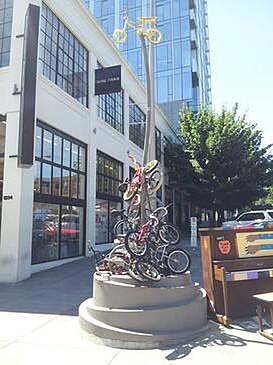
People's Bike Library of Portland, also known as Zoobomb Pyle or simply "the pile", is a 2009 steel and gold leaf sculpture by local artists Brian Borrello and Rankin Renwick, located in Portland, Oregon, in the United States. It was erected in collaboration with the Zoobomb bicycling collective, and serves as a bicycle parking rack, a "lending library" for weekly bike riders, and a monument to the city's bike culture. The sculpture features a two-story spiral pillar with a gold-plated small bicycle on top; bicycles intended for Zoobomb riders are locked to the pillar and base, which has metal loops serving as hooks.
29. The Dream
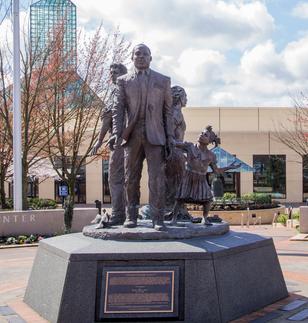
The Dream, also known as the Dr. Martin Luther King Jr. Memorial Sculpture, is an outdoor bronze sculpture of Martin Luther King Jr. by Michael Florin Dente, located outside the Oregon Convention Center in Portland, Oregon. The 8-foot (2.4 m) memorial statue was dedicated on August 28, 1998, the 35th anniversary of King's "I Have a Dream" speech. It depicts King plus three allegorical sculptures: a man who symbolizes the American worker, a woman who represents immigration, and a young girl shown releasing King's coattail, who represents, according to Dente, the "letting go" that occurs when people sacrifice their time and energy to engage in a struggle. The sculpture is part of the City of Portland and Multnomah County Public Art Collection, courtesy of the Regional Arts & Culture Council.
30. Shemanski Fountain
Shemanski Fountain, also known as Rebecca at the Well, is an outdoor fountain with a bronze sculpture, located in the South Park Blocks of downtown Portland, Oregon, in the United States. The sandstone fountain was designed in 1925, completed in 1926, and named after Joseph Shemanski, a Polish immigrant and businessman who gave it to the city. Carl L. Linde designed the trefoil, which features a statue designed by Oliver L. Barrett. The sculpture, which was added to the fountain in 1928, depicts the biblical personage Rebecca. Shemanski Fountain includes two drinking platforms with three basins each, with one platform intended for use by dogs.
31. Vista Bridge
The Vista Bridge is an arch bridge for vehicles and pedestrians located in Portland, Oregon, United States. It connects the areas of King's Hill and Vista Ridge which are both in the Goose Hollow neighborhood. The MAX Light Rail line and Jefferson Street/Canyon Road travel under the bridge, and Vista Avenue crosses the bridge.
32. Peacock Lane Historic District
Peacock Lane is a four-block street in southeast Portland, Oregon, in the United States. It is known for its elaborately decorated homes during the Christmas and holiday season. During this time of year, thousands of people come to view the displays, enjoy hot cocoa, and previously take horsedrawn carriage rides, and sing Christmas carols. The street earned a listing on the National Register of Historic Places in 2017.
33. Keller Auditorium
Keller Auditorium, formerly known as the Portland Municipal Auditorium, the Portland Public Auditorium, and the Portland Civic Auditorium, is a performing arts center located on Clay Street in downtown Portland, Oregon, United States. It is part of the Portland's Centers for the Arts. Opened in 1917, the venue first changed names in 1966, being renamed again in 2000 in honor of a $1.5 million renovation donation by Richard B. Keller. An extensive remodeling and modernization in 1967–68 effectively changed its original exterior appearance beyond recognition.
34. Portland City Hall
Portland City Hall is the headquarters of city government of Portland, Oregon, United States. The four-story Italian Renaissance-style building houses the offices of the City Council, which consists of the mayor and four commissioners, and several other offices. City Hall is also home to the City Council chambers, located in the rotunda on the east side of the structure. Completed in 1895, the building was added to the National Register of Historic Places on November 21, 1974. City Hall has gone through several renovations, with the most recent overhaul gutting the interior to upgrade it to modern seismic and safety standards. The original was built for $600,000, while the 1996 to 1998 renovation cost $29 million.
35. Hoyt Arboretum Visitor Center
Hoyt Arboretum is a public park in Portland, Oregon, which is part of the complex of parks collectively known as Washington Park. The 189-acre (76 ha) arboretum is located atop a ridge in the Tualatin Mountains two miles (3.2 km) west of downtown Portland. Hoyt has 12 miles of hiking trails, two miles of accessible paved trails, and is open free to the public all year. About 350,000 visitors per year visit the arboretum.
36. Soldiers Monument
The Spanish–American War Soldier's Monument, also known as the Spanish–American War Memorial or simply Soldiers Monument, is an outdoor sculpture and war memorial monument honoring the dead of the 2nd Oregon Volunteer Infantry Regiment of the Spanish–American War and Philippine–American War. The monument was created by American artist Douglas Tilden and located in Lownsdale Square, in the Plaza Blocks of downtown Portland, Oregon. It features a bronze statue on a marble pedestal and granite base. The monument is part of the City of Portland and Multnomah County Public Art Collection courtesy of the Regional Arts & Culture Council.
37. Allow Me
Allow Me, also known as Umbrella Man, is a 1983 bronze sculpture by John Seward Johnson II, located in Pioneer Courthouse Square in Portland, Oregon, United States. The sculpture, one of seven Allow Me casts, was donated anonymously to the City of Portland in 1984 for display in the Square. It depicts a life-sized man dressed in a business suit, hailing a cab and holding an umbrella. Constructed from bronze, aluminum and stainless steel, the sculpture stands six feet, ten inches tall and weighs 460 pounds. The sculpture is one of many works of art generated by the city's Percent for Art program, and is considered part of the City of Portland and Multnomah County Public Art Collection courtesy of the Regional Arts & Culture Council.
38. Keller Fountain Park
Keller Fountain Park is a city park in downtown Portland, Oregon. Originally named Forecourt Fountain or Auditorium Forecourt, the 0.92-acre (0.37 ha) park opened in 1970 across Third Avenue from what was then Civic Auditorium. In 1978, the park was renamed after Ira C. Keller, head of the Portland Development Commission (PDC) from 1958 to 1972. Civic Auditorium was renamed as Keller Auditorium in 2000, but is named in honor of Ira's son, Richard B. Keller.
39. Fountain for Company H
Fountain for Company H, also known as Second Oregon Company Volunteers, is a 1914 fountain and war memorial designed by John H. Beaver, installed in Portland, Oregon's Plaza Blocks, in the United States. Dedicated to the men of Company H of the 2nd Oregon Volunteer Infantry Regiment killed in service during the Spanish–American War, the limestone and bronze memorial was installed in Lownsdale Square in 1914. It is part of the City of Portland and Multnomah County Public Art Collection courtesy of the Regional Arts & Culture Council. The memorial has been included in published walking tours of Portland.
40. Star Theater Portland
The Star Theater, formerly known as Princess Theatre and several other names, is a historic former silent film theater in Portland, Oregon, United States. The theater currently operates as a live music and performance space; in the past, it has operated as a film theater as well as a burlesque theater and an adult movie theater.
41. Five Oaks Museum

Five Oaks Museum, formerly known as the Washington County Museum, is a history museum in Washington County, Oregon, United States. It is located at the Rock Creek campus of Portland Community College (PCC), north of Beaverton, Oregon. From 2012 to 2017, its public exhibit space was located in downtown Hillsboro, Oregon, before it was moved back to PCC, its pre-2012 location and where the museum's research facility had already been located.
42. Ladd's Addition Historic District
Ladd's Addition is an inner southeast historic district of Portland, Oregon, United States. It is Portland's oldest planned residential development, and one of the oldest in the western United States. The district is known in Portland for a diagonal street pattern, which is at odds with the rectilinear grid of the surrounding area. Roughly eight blocks (east-west) by ten blocks (north-south) in size, Ladd's is bordered by SE Hawthorne, Division, 12th, and 20th streets. It is part of the Hosford-Abernethy neighborhood association.
43. Portland Center Stage at The Armory
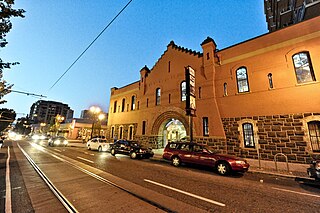
The Armory, historically known as the First Regiment Armory Annex, and home to Portland Center Stage at The Armory, is a historic building with two theaters and is located in Portland, Oregon, United States. It was built in 1891 by Multnomah County to house the Oregon National Guard. In 2000, it was added to the National Register of Historic Places. Following a $36.1 million renovation project that lasted from 2002 to 2006, the building home to the theater company Portland Center Stage which produces 11 productions each season. An estimated 150,000 visitors visit The Armory annually to enjoy a mix of classical, contemporary and world premiere productions, along with the annual JAW: A Playwrights Festival, and a variety of high-quality education and community programs.
44. Liberty Bell
Liberty Bell refers to one of two replicas in Portland, Oregon, United States, of the original Liberty Bell in Philadelphia. The first replica was purchased in 1962, and installed in the rotunda of City Hall in 1964. On November 21, 1970, it was destroyed in a bomb blast that also damaged the building's east portico. The second replica was installed outside of City Hall soon after the blast with funds from private donations. It was dedicated on November 6, 1975. The bell is listed as a state veterans memorial by the Oregon Department of Veterans' Affairs.
45. Portland Observatory
The Portland Observatory is a historic maritime signal tower at 138 Congress Street in the Munjoy Hill section of Portland, Maine. Built in 1807, it is the only known surviving tower of its type in the United States. Using both a telescope and signal flags, two-way communication between ship and shore was possible several hours before an incoming vessel reached the docks. The tower was designated a National Historic Landmark and a National Historic Civil Engineering Landmark in 2006; it is now managed by Greater Portland Landmarks, a local historic preservation nonprofit. It is open to the public as a museum.
Wikipedia: Portland Observatory (EN), Website, Heritage Website
46. The Pod
Pod is the name of a 2002 modern sculpture by American artist Pete Beeman, currently installed at Southwest 10th Avenue and West Burnside Street in downtown Portland, Oregon. The 30-foot (9.1 m) sculpture, intended to represent the "infrastructure, energy, and vibrancy of Portland", is supported by its static tripod base with a 15-foot (4.6 m) diameter. It is constructed from stainless steel, galvanized steel, bronze, titanium, lead and other materials. Pod was fabricated by Beeman and David Bermudez, and engineered by Beeman and Peterson Structural Engineers. It is considered interactive and kinetic, with a central, vertical pendulum that swings back and forth when pushed. The sculpture cost as much as $50,000 and was funded by the Portland Streetcar Project. Pod is part of the City of Portland and Multnomah County Public Art Collection courtesy of the Regional Arts & Culture Council.
47. Victoria Mansion
Victoria Mansion, also known as the Morse-Libby House or Morse-Libby Mansion, is a historic house in downtown Portland, Maine, United States. The brownstone exterior, elaborate interior design, opulent furnishings and early technological conveniences provide a detailed portrait of lavish living in nineteenth-century America. It was declared a National Historic Landmark in 1971 for its architectural significance as a particularly well-preserved Italianate mansion.
48. Trinity Episcopal Cathedral
Trinity Episcopal Cathedral in Portland, Oregon is a progressive Episcopal congregation and the seat of the Episcopal Diocese of Oregon of The Episcopal Church. The cathedral is located at 147 NW 19th Avenue in Portland, Oregon, in the Northwest District.
Wikipedia: Trinity Episcopal Cathedral (Portland, Oregon) (EN), Website
49. Hōlon
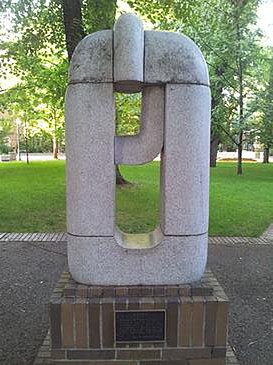
Holon, also known as Hōlon, is an outdoor stone sculpture by Donald Wilson, located in the South Park Blocks in Portland, Oregon, United States. It was originally commissioned in 1978–1979 and re-carved in 2003–2004. It is part of the City of Portland and Multnomah County Public Art Collection courtesy of the Regional Arts & Culture Council, which administers the work.
50. Delta Park
Delta Park is a public municipal park complex in north Portland in the U.S. state of Oregon. Delta Park is composed of two distinct sections referred to as East and West Delta Park. The Owens Sports Complex is a notable attraction of East Delta Park, bringing teams from across the West Coast to compete in an array of sports.
51. Portland Museum of Art
The Portland Museum of Art, or PMA, is the largest and oldest public art institution in Maine. Founded as the Portland Society of Art in 1882. It is located in the downtown area known as The Arts District in Portland, Maine.
52. Cathedral of the Immaculate Conception
The Cathedral of the Immaculate Conception is a historic cathedral on Cumberland Avenue in Portland, Maine, which serves as seat of the Diocese of Portland. The rector is Father Seamus Griesbach. The church, an imposing Gothic Revival structure built in 1866–69, was listed on the National Register of Historic Places in 1985. Until 2023, it was the tallest building in Portland. It was surpassed by 201 Federal Street.
Wikipedia: Cathedral of the Immaculate Conception (Portland, Maine) (EN)
53. Nepenthes
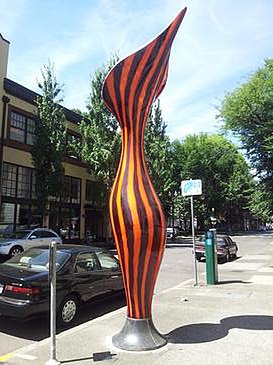
Nepenthes is a series of four sculptures by artist Dan Corson, installed in 2013 along Northwest Davis Street in the Old Town Chinatown neighborhood of Portland, Oregon, in the United States. The work was inspired by the genus of carnivorous plants of the same name, known as tropical pitcher plants. The sculptures are 17 feet (5.2 m) tall and glow in the dark due to photovoltaics.
54. Loyal B. Stearns Memorial
The Loyal B. Stearns Memorial Fountain, also known as the Judge Loyal B. Stearns Memorial Fountain, is an outdoor 1941 drinking fountain and sculpture by the design firm A. E. Doyle and Associates, located in Portland, Oregon. It was erected in Washington Park in honor of the former Oregon judge Loyal B. Stearns.
55. Universal Peace & Baby Elephant
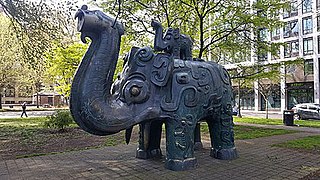
Da Tung and Xi'an Bao, is an outdoor 2002 bronze sculpture, located at the North Park Blocks in downtown Portland, Oregon, United States. The sculptor is unknown. It is part of the City of Portland and Multnomah County Public Art Collection courtesy of the Regional Arts & Culture Council.
56. Washington County Jailhouse
The Historic Washington County Jail is a log, one-room jail previously used in Oregon. It was built in 1853 and was used until 1870. In 1986, it was listed on the National Register of Historic Places (NRHP), and is preserved by the Washington County Museum in Washington County, Oregon, United States and is exhibited outside of the museum near its entrance. In 2008, the building was de-listed from the NRHP.
57. Ghost Ship
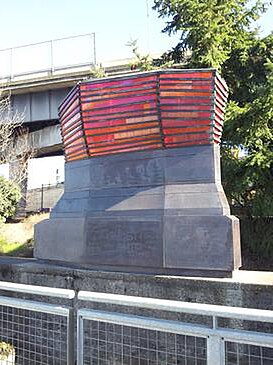
Ghost Ship is an outdoor 2001 sculpture by James Harrison and Rigga, a group of local artists, located along the Eastbank Esplanade in Portland, Oregon. It is made of copper, stainless steel, art glass, and two lamps. It is part of the City of Portland and Multnomah County Public Art Collection courtesy of the Regional Arts & Culture Council.
58. Pier Park
Pier Park is a municipal park in Portland, Oregon, United States. It is in the North Portland neighborhood of St. Johns and is bordered by North Columbia Boulevard and characterized by evergreen forest. Pier Park, along with Kelley Point Park and Smith and Bybee Wetlands Natural Area, contributes land in its natural state to North Portland.
59. Neal Dow House
The Neal Dow House, also known as Gen. Neal Dow House, is an historic house found at 714 Congress Street in Portland, Maine. It was built in 1829 for noted politician and prohibitionist Neal Dow (1804-1897), and was later designated a National Historic Landmark for that association. Dow was the author of the first prohibition law passed by the Maine legislature in 1851. He was known as a tireless, internationally known activist for the temperance movement. Dow's house was a center of activism in his lifetime, and is now the headquarters of the Maine chapter of the Women's Christian Temperance Union.
60. Payson Park
Edward Payson Park is a 47.5-acre (19.2 ha) public park in the Back Cove neighborhood of Portland, Maine. The park is bordered by Ocean Avenue to the north and Baxter Boulevard to the south. The offices of the Roman Catholic Diocese of Portland are located across from the park on Ocean Avenue.
61. Running Horses
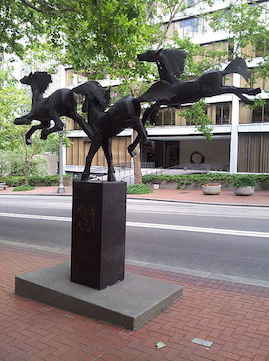
Running Horses is an outdoor 1986 bronze sculpture by Tom Hardy, located on the Transit Mall in downtown Portland, Oregon. It is part of the City of Portland and Multnomah County Public Art Collection courtesy of the Regional Arts & Culture Council.
62. Facing the Crowd
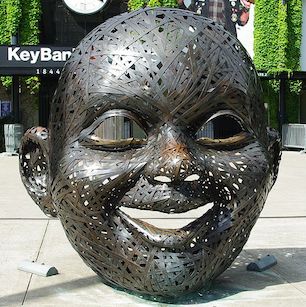
Facing the Crowd is a series of two outdoor sculptures by American artist Michael Stutz, located outside of Providence Park in Portland, Oregon, in the United States. Composed of silicon bronze, the sculptures depict faces of a laughing man and a smiling boy. They were funded by the City of Portland's Percent for Art program and were installed in 2001, during a major remodel of the outdoor sports venue then known as PGE Park.
63. Sunken Village Archeological Site
The Sunken Village Archeological Site, designated by the Smithsonian trinomial 35MU4, is an archaeological site on Sauvie Island in Multnomah County, Oregon, United States. The site consists of a remarkably well-preserved Chinookan village, dating back more than 700 years. It is a major example of a wet archaeological site, in which cultural materials were preserved in an anaerobic freshwater environment. Finds at the site include well-preserved basketry. The site was declared a National Historic Landmark in 1989.
64. Vietnam Veterans of Oregon Memorial
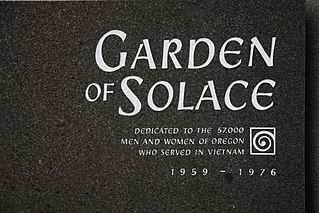
The Oregon Vietnam Veterans Memorial is an 8-acre (0.03 km2) outdoor war memorial dedicated to Oregonians who served in the Vietnam War. It is located in Portland, Oregon's Washington Park at 45.5120°N 122.71857°W. The memorial was dedicated in 1987, inspired in 1982 by visits to the national Vietnam Veterans Memorial by five veterans and the parents of a Marine killed in Vietnam. Landscape architecture firm Walker Macy of Portland designed the memorial, while construction labor and materials were almost entirely volunteer donations.The font used in the memorial was created for the exclusive use of the Memorial. It was designed by Janis Price, and is called Hoyt, in recognition of the Arboretum.
65. Friendship Circle
Friendship Circle is a collaborative art installation by American artist Lee Kelly and musician Michael Stirling, located in Portland, Oregon's Tom McCall Waterfront Park, in the United States. The installation features a stainless steel sculpture with two 20-foot towers, designed by Kelly, and a 35-minute score composed by Stirling. It celebrates the sister city relationship between Portland and Sapporo, Japan.
66. Driver's Seat
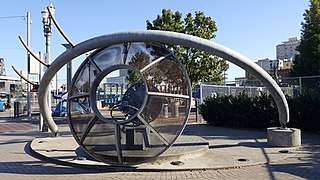
Driver's Seat is a 1994 galvanized steel sculpture by Don Merkt, installed along the Transit Mall in Portland, Oregon's Old Town Chinatown neighborhood, in the United States. The artwork was funded by the City of Portland's Percent for Art program, the Portland Development Commission, and TriMet, and remains part of the City of Portland and Multnomah County Public Art Collection courtesy of the Regional Arts & Culture Council.
67. Echo Gate
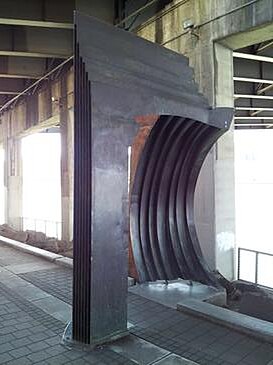
Echo Gate is an outdoor 2001 sculpture by Ean Eldred and the architectural firm Rigga, located along the Eastbank Esplanade in Portland, Oregon, United States. It was funded by the City of Portland Development Commission's Percent for Art program, and is part of the City of Portland and Multnomah County Public Art Collection courtesy of the Regional Arts & Culture Council.
68. The Responsibility of Raising a Child
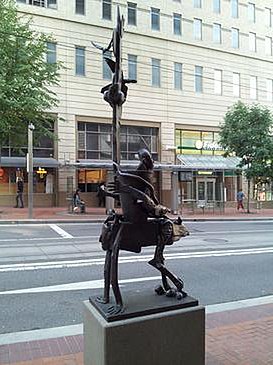
The Responsibility of Raising a Child, also known as From the Mad River to the Little Salmon River, or The Responsibility of Raising a Child, is an outdoor 2004 bronze sculpture by Native American artist Rick Bartow, located in Portland, Oregon, United States.
69. Inversion +/-
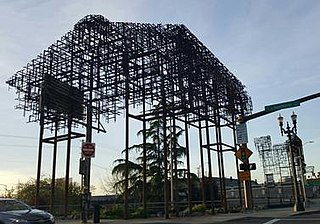
Inversion: Plus Minus is a pair of outdoor sculptures designed by artists and architects Annie Han and Daniel Mihalyo, located in southeast Portland, Oregon. The sculptures, constructed from weathered steel angle iron, are sited near the Morrison Bridge and Hawthorne Bridge along Southeast Grand Avenue and represent "ghosts" of former buildings. The installation on Belmont Street emphasizes "negative space" while the sculpture on Hawthorne Street appears as a more solid matrix of metal. According to the artists, the works are reminiscent of industrial buildings that existed on the project sites historically. Inversion was funded by the two percent for art ordinance as part of the expansion of the Eastside Portland Streetcar line and is managed by the Regional Arts & Culture Council.
70. Etz Chaim Synagogue
Etz Chaim Synagogue is a unaffiliated Jewish congregation, synagogue, and Jewish history museum, located at 267 Congress Street, at the head of India Street, in Portland, Maine, United States. The congregation is the only immigrant-era European-style synagogue remaining in Maine. It was founded in 1917 as an English-language Orthodox Sefardi congregation, rather than in the Yiddish-language tradition; and the synagogue was completed in 1921. In c. 2003, the dwindling Orthodox congregation became egalitarian and unaffiliated with any movement.
71. The Dreamer
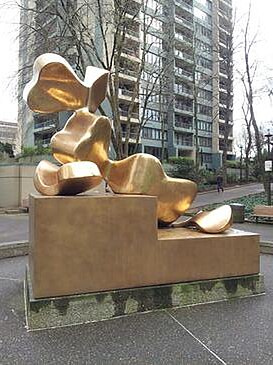
The Dreamer, or simply Dreamer, is an outdoor 1979 muntz bronze sculpture and fountain of a reclining woman by Manuel Izquierdo, installed at Pettygrove Park in Portland, Oregon, United States. It is part of the City of Portland and Multnomah County Public Art Collection courtesy of the Regional Arts & Culture Council, which administers the work.
72. Kerf
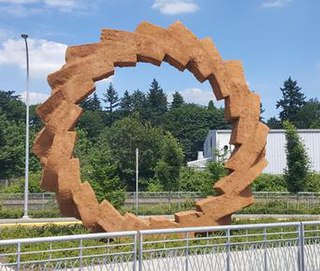
Kerf is an outdoor series of two pigmented cast concrete sculptures by Thomas Sayre, installed at the MAX Orange Line's Southeast Tacoma/Johnson Creek station in the southeast Portland, Oregon portion of the Ardenwald-Johnson Creek neighborhood, which straddles the border between Portland and Milwaukie, Oregon.
73. Chinatown Gateway
Chinatown Gateway is an outdoor paifang and sculpture which serves as an entrance to Portland, Oregon's Old Town Chinatown neighborhood, in the United States. The gate was proposed by the Chinese Consolidated Benevolent Association in 1984. Architect Yu Tang Wang and artist Sun Chau completed the gate's design, which was built by Ting Hwa Architects in Taiwan. It was then shipped to Portland and installed in one week before being dedicated in November 1986. It cost $256,000 and was the largest of its kind in the United States until one in Washington, D.C. was completed several months later.
74. Constellation: Flowers from a Neighborhood Garden
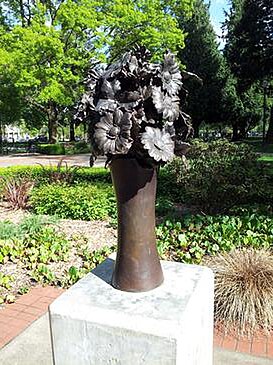
Constellation is a series of outdoor 2000 bronze sculptures by American artist Tad Savinar, installed at Holladay Park in northeast Portland, Oregon, United States. The work's three "distinct elements" include:Constellation (Vase of Flowers) or Constellation: Flowers from a Neighborhood Garden, a slender vase of daisies, hydrangeas and other flowers; Constellation (Molecule) or Constellation: Isolated Molecule for a Good Neighborhood, an abstract molecule representing a "good neighborhood"; and Constellation: Neighborhood Gardiner or simply Constellation, a female figure carrying gardening shears.
75. Clatsop Butte
Clatsop Butte is an upland butte lying directly south of Powell Butte in southeast Portland, Oregon, United States. Clatsop Butte City Park, which occupies part of the butte, is at coordinates 45°28′28″N 122°30′24″W at an elevation of 577 feet (176 m). Johnson Creek, Southeast Foster Road, and the Springwater Corridor Trail pass between Powell Butte and Clatsop Butte near Southeast 152nd Avenue.
76. Untitled
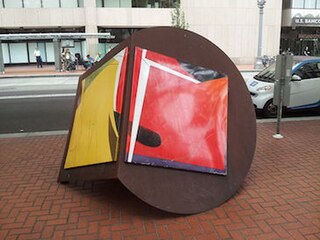
Untitled is an outdoor 1977 steel and porcelain enamel sculpture by American artist John Killmaster, located in downtown Portland, Oregon. It is part of the City of Portland and Multnomah County Public Art Collection courtesy of the Regional Arts & Culture Council.
77. East Portland Grand Avenue Historic District
The East Portland Grand Avenue Historic District, located in southeast Portland, Oregon, is listed on the National Register of Historic Places. The district includes approximately 20 city blocks on or near Southeast Grand Avenue on the east side of the Willamette River, roughly bounded on the south by SE Main Street, north by SE Ankeny Street, west by SE Martin Luther King Jr. Boulevard, and east by SE Seventh Avenue. Most structures in the district are commercial buildings rising two to three stories. Immediately to the west of the historic district is Portland's east side industrial area, and to the east are industrial and residential areas.
Wikipedia: East Portland Grand Avenue Historic District (EN)
78. South Portland Historic District
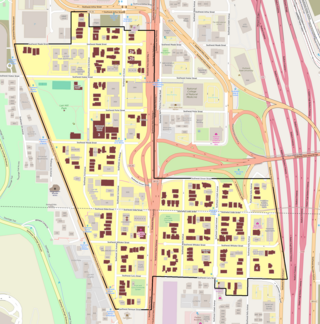
The South Portland Historic District is an historic district in Portland, Oregon's South Portland neighborhood, in the United States. It was listed on the National Register of Historic Places in 1998.
79. Floribunda
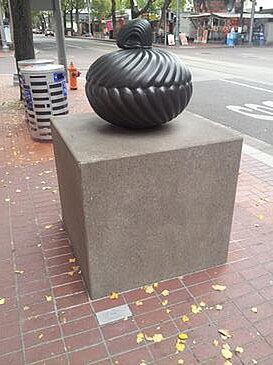
Floribunda is an outdoor 1998 bronze sculpture by American artist Mark Calderon, installed in Portland, Oregon, United States. It is part of the City of Portland and Multnomah County Public Art Collection courtesy of the Regional Arts & Culture Council, which administers the work.
80. Continuation
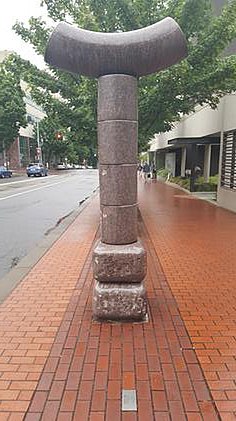
Continuation is an outdoor 2009 granite series of sculptures by Japanese artist Michihiro Kosuge, installed along Portland, Oregon's Transit Mall, in the United States. It is part of the City of Portland and Multnomah County Public Art Collection courtesy of the Regional Arts & Culture Council, which administers the work.
81. Urban Hydrology
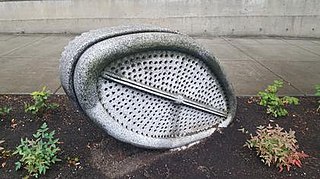
Urban Hydrology is a series of twelve outdoor 2009 granite sculpture by Fernanda D'Agostino, installed along the Portland Transit Mall in Portland, Oregon, United States. The work is part of the City of Portland and Multnomah County Public Art Collection courtesy of the Regional Arts & Culture Council, which administers the work.
82. Ring of Time
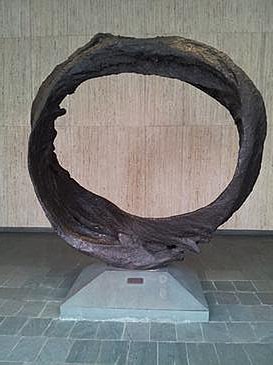
Ring of Time, also known as The Ring of Time, is an outdoor bronze sculpture by Hilda Grossman Morris, located at the entrance to the Standard Plaza in Portland, Oregon. The allegorical sculpture was created during 1965–1967 and is owned by the Standard Insurance Company.
83. Westmoreland Park
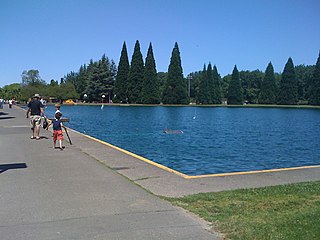
Westmoreland Park is a municipal park located in the Westmoreland area of southeast Portland, Oregon's Westmoreland neighborhood, United States. The property for the park was acquired in 1936 and encompasses 42.01 acres (17.00 ha). Located along McLoughlin Boulevard, the park straddles Crystal Springs Creek just downstream from the Crystal Springs Rhododendron Garden. The park is operated by Portland Parks & Recreation and includes sports fields, a playground, and pond. The Royal Rosarian Milk Carton Boat Race takes place every summer in the park's casting pond.
84. Grace
The former Chestnut Street Methodist Church is an historic church building at 15 Chestnut Street in Portland, Maine. Built in 1856, it is rare in the city as an early example of Gothic Revival architecture, and is one of the few surviving works of Charles A. Alexander, a popular architect of the period. The building was listed on the National Register of Historic Places in 1977. It now houses an event venue.
Wikipedia: Chestnut Street Methodist Church (Portland, Maine) (EN), Website
85. Elk Rock Gardens of the Bishop's Close
Elk Rock Gardens of the Bishop's Close are located on a hillside estate overlooking the Willamette River in Dunthorpe, Oregon, in the United States. Peter Kerr started the gardens in 1916 on a 13-acre (5.3 ha) estate that passed to the Episcopal Diocese of Oregon after his death in 1957. The private estate includes a manor house-inspired residence and other structures, and is open to visitors Monday - Friday, 8:00 am - 5:00pm.
86. First Parish Portland Unitarian Universalist Church
First Parish Church is a historic church at 425 Congress Street in Portland, Maine. Built in 1825 for a congregation established in 1674, it is the oldest church building in the city, and one of its finest examples of Federal period architecture. It was listed on the National Register of Historic Places in 1973. The congregation is Unitarian Universalist; its pastor is Reverend Norman Allen.
Wikipedia: First Parish Church (Portland, Maine) (EN), Website
87. Burnside Trolley Building
The West Ankeny Car Barns Bay E is a former streetcar carbarn in Portland, Oregon, that is listed on the U.S. National Register of Historic Places. Completed in 1911, it was one of three buildings that collectively made up the Ankeny Car Barns complex of the Portland Railway, Light and Power Company (PRL&P), the owner and operator of Portland's streetcar system at the time. By 1978, the brick building had become the only surviving structure from the Ankeny complex and one of only two surviving remnants of carbarn complexes of the Portland area's large street railway and interurban system of the past, the other being the PRL&P's Sellwood Division Carbarn Office and Clubhouse.
88. Victorian Belle
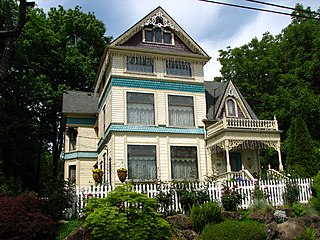
The David Cole House is a house located in Portland, Oregon, listed on the National Register of Historic Places. The house includes several stained glass windows made by Portland's Povey Brothers Studio. It is in the Kenton neighborhood of North Portland, and operates as an events venues called the Victorian Belle.
89. Portland Firefighters Park
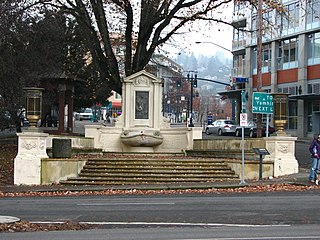
Portland Firefighters Park is a public park located in Portland, Oregon. In 1927, the park was established, to include a memorial in honor of firefighter David Campbell. Campbell was the fire chief for Portland and was killed in action while fighting a fire at a Union Oil distribution plant. It was added to the U.S. National Register of Historic Places on September 24, 2010, as the David Campbell Memorial.
90. Genoa Building
The Genoa Building, at the intersection of Southeast Belmont Street and Southeast 29th Avenue in Portland in the U.S. state of Oregon, is a single-story commercial building listed on the National Register of Historic Places. Built in a Vernacular style with Mediterranean features in 1930, it was added to the register in 1997.
91. Alfred J. and Georgia A. Armstrong House
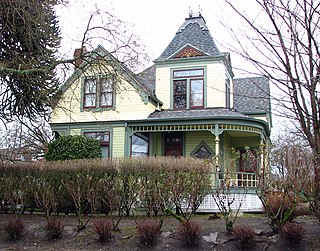
The Alfred J. and Georgia A. Armstrong House is a historic house in Portland, Oregon, United States. A modest but elaborate Queen Anne house built in 1894, it is one of very few intact examples of its type remaining from the early years of development in the King neighborhood. Likely constructed by one of its original occupants, a skilled carpenter, it exhibits more defining Queen Anne characteristics than other nearby houses of the same period, including a tower and the large quantity of jigsawed ornamentation. It was entered on the National Register of Historic Places in 2002.
92. Umbrella Cover Museum
The Umbrella Cover Museum in Peaks Island, Maine is a museum that pays tribute to umbrella covers. The museum was created and is curated by Nancy 3. Hoffman, who has collected more than 2000 umbrella covers from 66 countries as of July 2018.
93. Peck Bros. and Bartle Tire Service Company Building
The Peck Bros. and Bartle Tire Service Company Building, also known as the Photo Art Building, is a building located in downtown Portland, Oregon, United States, listed on the National Register of Historic Places.
Wikipedia: Peck Bros. and Bartle Tire Service Company Building (EN)
94. Portland Skidmore/Old Town Historic District
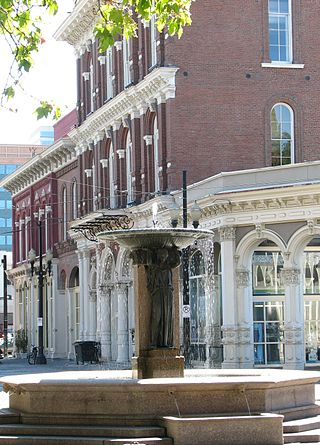
The Portland Skidmore/Old Town Historic District is an historic district in Portland, Oregon's Old Town Chinatown neighborhood, in the United States. The approximately 20-block area, center around Burnside Street and named after the Skidmore Fountain, is known for exhibiting Italianate architecture, though High Victorian Italianate, Renaissance Revival, Richardsonian Romanesque, and Sullivanesque styles are also present. In addition to Skidmore Fountain, structures within the district's boundaries include the Blagen Block, Delschneider Building, Hallock and McMillin Building, New Market Theater, New Market Alley Building, New Market Annex, and Poppleton Building.
Wikipedia: Portland Skidmore/Old Town Historic District (EN)
95. USS LCI(L)-713
-713.jpg)
The LCI(L)-713, is located in Portland, Oregon now moored in the Swan Island Lagoon. It is currently owned and being restored by a non-profit 501c3 group, the Amphibious Forces Memorial Museum. Built in 1944 in Neponset, Massachusetts, the ship was transferred to the Pacific Theater where it saw action in making two assault landings: Zamboanga, Philippines in March 1945 and Brunei Bay, Borneo in June 1945. Purchased as war surplus initially for use as a log hauling tugboat, the engines were removed and it was relegated to a floating storage hulk in Stevenson, Washington until the late 1950s when it was abandoned and sank into the river mud on the shore of the Columbia River. In the late 1970s the ship was refloated and restoration began on the ship. LCI(L)713 has changed ownership until finally sold to the AFMM in 2003. The LCI(L) 713 has been continually restored with the goal of becoming a historically correct operating museum ship. It was listed on the National Register of Historic Places on April 12, 2007.
96. Terry Schrunk Plaza
Terry Schrunk Plaza is a park located in downtown Portland, Oregon, United States. Located in between the Edith Green – Wendell Wyatt Federal Building and Portland City Hall, and adjacent to the Plaza Blocks, it is owned and operated by the federal government.
97. Salmon Street Springs
Salmon Street Springs, or Salmon Street Fountain, is an outdoor water fountain at the intersection of Naito Parkway at Southwest Salmon in Tom McCall Waterfront Park in Portland, Oregon, United States. It was designed by Robert Perron Landscape Architects and Planners and dedicated in 1988. The fountain's three water displays, which are regulated by a computer, are called "bollards", "misters", and "wedding cake".
98. Alphabet Historic District
The Alphabet Historic District, is a historic district in the Northwest District of Portland, Oregon which was listed on the National Register of Historic Places in 2000. It is 156.9 acres (63.5 ha) in area and includes 478 contributing buildings. It is roughly bounded by NW Lovejoy St., NW Marshall St., NW 17th Ave., W. Burnside St., and NW 24th Ave.
99. Oddo Memorial
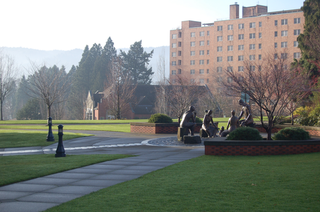
The Oddo Memorial, also known as Christ the Teacher or Christ the Teacher and Four Students, is an outdoor sculptural group commemorating Reverend Thomas C. Oddo by Donovan Peterson, installed on the University of Portland campus in Portland, Oregon, United States. Oddo had advocated for the commissioning of a sculpture "that reflected both the University's Catholicity and its openness to all spiritual inquiry" in 1987. Oddo died in 1989, and in 1991, the university's president Reverend David T. Tyson recommended the sculpture serve as a memorial to Oddo. The memorial depicts Christ the Teacher and His companions.
100. Echo Theater
The Frances Building and Echo Theater in southeast Portland in the U.S. state of Oregon is a property listed on the National Register of Historic Places. Built in 1911, it was added to the register in 1994. The Frances Building is a two-story structure that faces Southeast Hawthorne Boulevard, while the Echo Theatre is a one-story structure facing Southeast 37th Avenue. The adjoining buildings, constructed as parts of a single project, are separated by a party wall.
Share
How likely are you to recommend us?
Disclaimer Please be aware of your surroundings and do not enter private property. We are not liable for any damages that occur during the tours.

